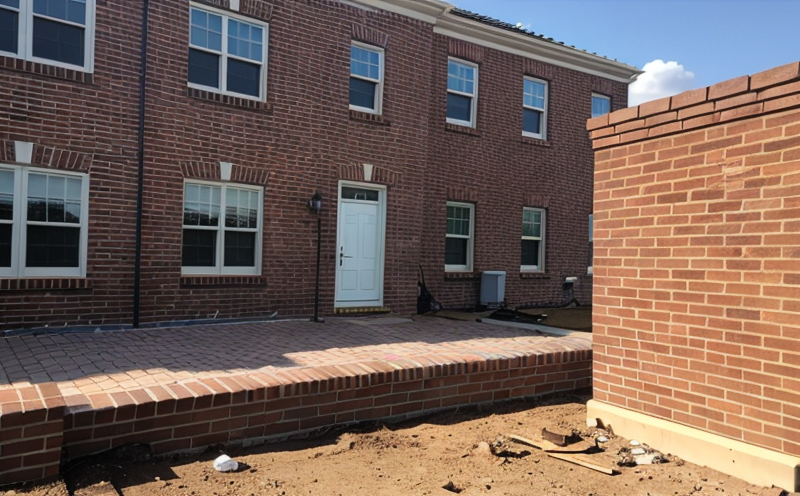EN 772 Acid Resistance Testing
The EN 772 series of European standards provides comprehensive guidelines for the testing and specification of masonry products used in building construction. One key aspect covered by this standard is the acid resistance test, which evaluates a brick's or block's resistance to chemical attack from acidic environments.
This test is critical because it ensures that materials meet durability requirements in various climates where acidic rainwater or industrial pollutants may be present. Durability is essential for long-term performance and safety of buildings, especially those exposed to aggressive environmental conditions like coastal areas or urban centers with high levels of sulfur dioxide emissions.
The standard specifies the procedure for determining the resistance of masonry units to the action of a dilute hydrochloric acid solution. It involves soaking bricks or blocks in this solution under controlled conditions and then assessing any changes in mass, coloration, texture, or other physical properties that might indicate degradation.
Understanding these parameters helps construction professionals select appropriate materials for specific projects ensuring longevity and compliance with relevant building codes. For instance, if a project is located near an industrial zone where acid rain poses significant risks to structural integrity, conducting this test ensures that the chosen masonry products will withstand such challenges effectively.
Accurate results from EN 772 acid resistance tests play a vital role in preventing premature failure of buildings due to material degradation. This not only extends the lifespan of structures but also reduces maintenance costs and potential safety hazards associated with compromised infrastructure.
The methodology outlined in EN 772 ensures consistency across different laboratories performing these tests, thereby enhancing reliability and comparability between various samples or batches from different manufacturers. Compliance with international standards like ISO and ASTM further reinforces the credibility of test results within global markets.
For quality managers and compliance officers responsible for ensuring product integrity during procurement processes, understanding this testing procedure is crucial. It enables them to make informed decisions about selecting suitable suppliers who adhere strictly to industry best practices regarding material durability.
Industry Applications
| Application Area | Description |
|---|---|
| Cold Regions Construction Projects | In areas prone to freezing and thawing cycles, acid resistance testing ensures that masonry products can withstand harsh weather conditions without deteriorating. |
| Urban Development Surrounding Industrial Zones | Close proximity to industrial sites increases exposure to acidic pollutants. Testing helps select materials resistant enough to maintain structural integrity over time. |
| Traffic Congested Areas with Frequent Rainfall | Roadside structures and retaining walls in such locations need robust masonry units capable of resisting acid rain effectively. |
- Ensures compliance with international standards for durability requirements.
- Aids in selecting appropriate materials suitable for specific environmental conditions.
Quality and Reliability Assurance
The EN 772 acid resistance test plays a crucial role in quality control by providing objective data on how well masonry products can resist acidic environments. This information allows manufacturers to optimize their production processes, ensuring consistent performance across all batches.
- Identifies weak points in product design early in the development stage.
- Simplifies supply chain management by identifying reliable suppliers who consistently meet quality standards.
For R&D engineers, this test offers valuable insights into material behavior under extreme conditions. By analyzing results from multiple samples or batches, they can refine formulations and improve overall product performance.
Environmental and Sustainability Contributions
Evaluating the acid resistance of masonry materials contributes significantly to sustainable building practices by promoting the use of durable products that last longer with minimal maintenance. This reduces waste generation associated with frequent replacements due to material failure.
Additionally, selecting appropriate materials based on their acid resistance helps minimize environmental impact during construction activities. Durable structures require fewer resources for reconstruction over their lifetime, contributing positively to resource efficiency goals.





